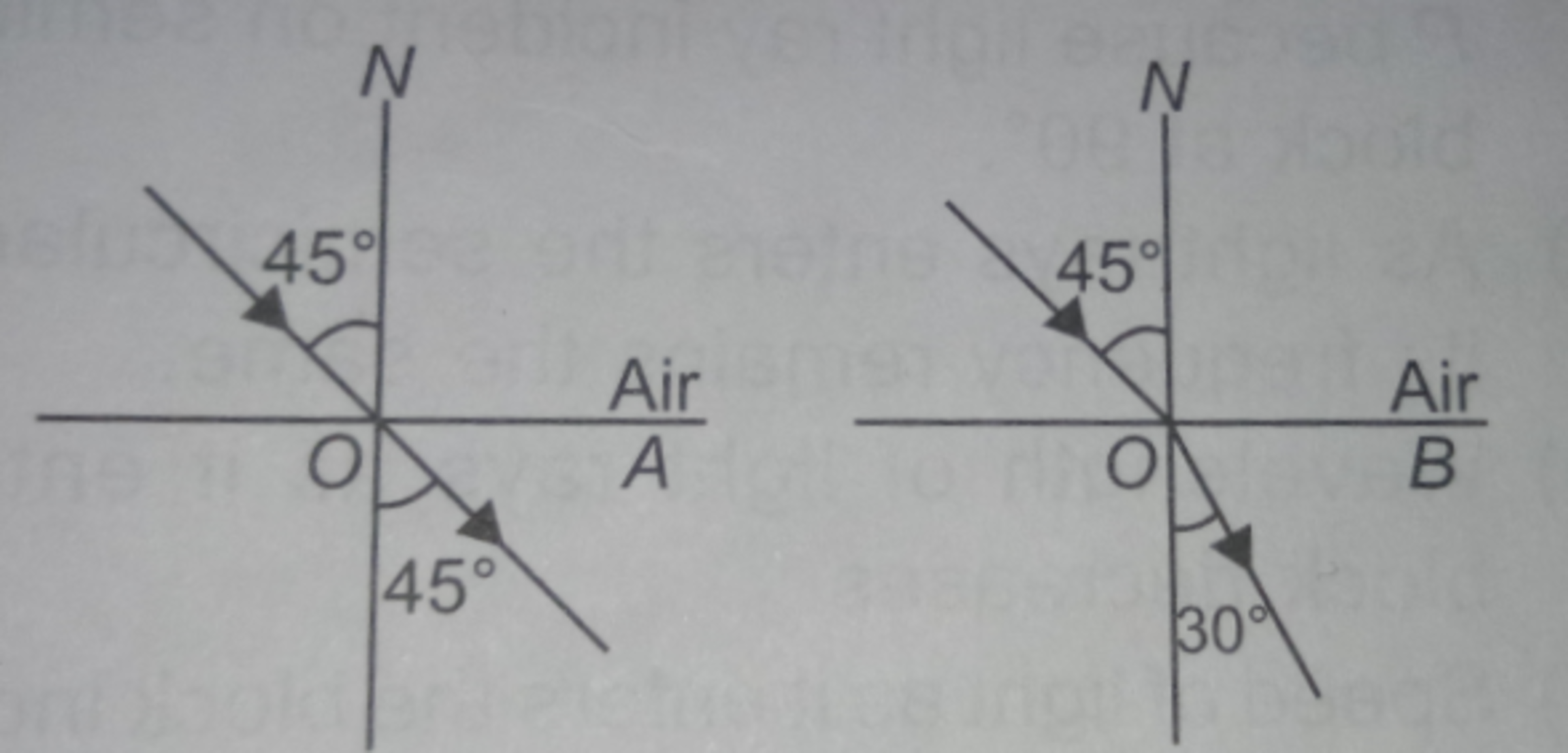Light testing 123
Classical Mechanics
Level
1
-
The path of a light ray from air to two different media A and B for a given angle of incidence as shown :

- QUESTION 1--> IF n A and n B are the refractive indices of two media then
- 1--> n A = n B
- 2--> n A > n B
- 3--> n A < n B
-
4 --> cannot be said
-
QUESTION 2--> IF angle of incidence is increased in both the media then angle of refraction will
- 1 --> increases
- 2 --> decreases
- 3 --> remain same
- 4--> becomes zero in medium A and will remain same in medium B
- NOTE ---> if your answer : cannot be said and decreases then write
- 42
The answer is 31.
This section requires Javascript.
You are seeing this because something didn't load right. We suggest you, (a) try
refreshing the page, (b) enabling javascript if it is disabled on your browser and,
finally, (c)
loading the
non-javascript version of this page
. We're sorry about the hassle.
Since the light ray goes undeviated in the first medium, the refractive indices of both air and the medium A are equal i.e both are 1 , but as we know that when light travels from rarer to denser medium, it bends towards the normal. Hence refractive index of medium B is greater than 1 .
This can also be seen by using Snell's law of refraction , which states that μ 1 sin i = μ 2 sin r where μ 1 and μ 2 are the refractive indices of first and the second medium respectively and i and r denote the angles of incidence and refraction respectively.
Again by using Snell's law, we see that since μ 1 and μ 2 are fixed for the media, but increasing the angle of incidence will also increase the angle of refraction in both cases.
Hence the answer becomes 3 1 .